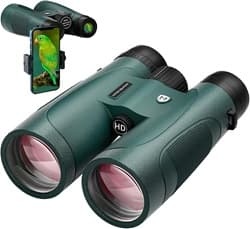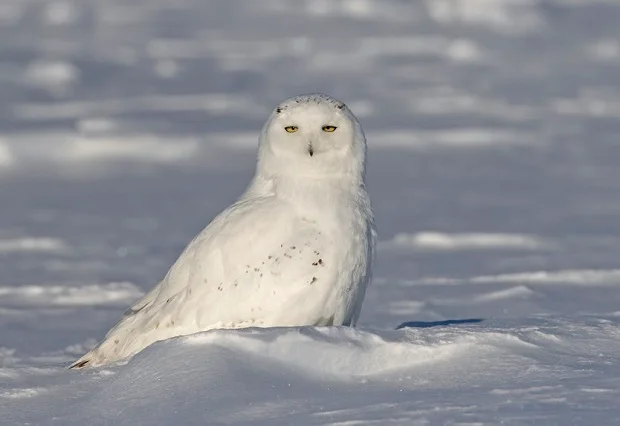Gabrielle Marks | Reviewed: 6/4/2025
Are Owls Nocturnal?
Answer at a Glance: Most owls are nocturnal, but not all. For example, the snowy owl of the Arctic has no choice but to hunt during daylight hours during the six months of the year when the region is illuminated twenty-four hours a day.
Dig Deeper
- Some Owls Are Not Nocturnal
- Can an Owl See in the Dark?
- How Does an Owl Hunt in the Dark?
- References
Some Owls Are Not Nocturnal
Though most owls are nocturnal, not all are. For example, the snowy owl of the Arctic has no choice but to hunt during daylight hours during the six months of the year when the region is illuminated twenty-four hours a day. [1] The Burrowing Owl and the Short-eared Owl are additional examples of owls that are active during the day. [2] [3 ]
Additionally, several species of owls are crepuscular, meaning they are active during the transitional periods of dusk and dawn, such as the Ferruginous Pygmy Owl. [4]
Nocturnal animals typically possess highly developed senses, including hearing and smell, as well as adaptive eyesight. The owl can see in the dark, but it depends primarily on its sense of hearing to find its prey.
Can an Owl See in the Dark?
Did you know that an owl can see 100 times better in the dark than we can? [5] This incredible ability is due to the specially designed eyes of the owl, equipped with tapetum lucidum, a layer of tissue that reflects light into the eye, allowing more light to enter and enhancing their night vision.
The pupils of the owl’s eyes can dilate up to 2.7 times more than those of humans, allowing more light to enter the eye and providing greater visibility in dimly lit situations. [7] They can also dilate independently of one another, a unique feature that allows them to adapt more quickly to changing light conditions. [8]
The subsequent major adaptation is the number of rods and cones present in the owl’s eye. Humans can see well in the daylight because we have many cones. In contrast, owls have more rods than cones, which pick up details in dim light. The rods contain high levels of rhodopsin, a pigment that absorbs light. They also have a larger retinal surface to accommodate a greater number of rods and cones. [9]
Did you know that what looks like ears on top of the owl’s head are actually nothing more but a bunch of feathers? The owl’s real ears are hidden behind the facial disk on the side of its head.
How Does an Owl Hunt in the Dark?
Though an owl can see in the dark, it primarily uses its keen sense of hearing, which is ten times better than ours, to hone in on its prey. [10] Experiments with trained barn owls have shown that they can capture prey in complete darkness, a testament to their incredible hearing abilities.
The ears of the owl, called apertures, are located on the sides of the owl’s head. In most owls, they are asymmetrical, allowing them to have three-dimensional hearing. The aperture on the right points up, while the left points down, assisting in vertical hearing, and their broad skull assists in horizontal hearing. [12]
The owl’s hearing is enhanced by its facial disk, the concave ruff of feathers on its face, which works as a reflector to funnel sound waves into the ears. The facial disk is such an integral part of the owl’s ability to hear acutely that experiments have demonstrated that an owl with some of its facial disk feathers removed cannot hunt as effectively. Interestingly, owls that are primarily nocturnal have larger and more concave facial disks than those that hunt during the day, which in turn tend to have better eyesight. [13]
References
- [1] National Park Service – Acadia National Park – “Owls.”
- [2] US Fish and Wildlife Service – “Burrowing Owl (Athene cunicularai.)”
- [3] Missouri Department of Conservation – “The Daylight Owl.”
- [4] Owl Research Institute – “Ferruginous Pygmy Owl.”
- [5][10] University of Wisconsin-Steven’s Point – “CWES Nature Navigator.”
- [6][9][12] Ponder, Julia, and Michelle Willette. Fowler’s Zoo and Wild Animal Medicine. Vol. Volume 8, W.B. Saunders, 2015, pp. 189–198.
- [7] Lynch, Wayne. Owls of the United States and Canada: a complete guide to their biology and behavior Baltimore: Johns Hopkins University Press, 2007. Print.
- [8][13] Berger, Cynthia. Owls, Mechanicsburg, PA: Stackpole Books, 2005. Print.
- [11] Konishi, Masakazu. “How the Owl Tracks Its Prey.” American Scientist, vol. 100, no. 6, Nov/Dec 2012, p. 494, www.americanscientist.org/article/how-the-owl-tracks-its-prey.
Related Products





